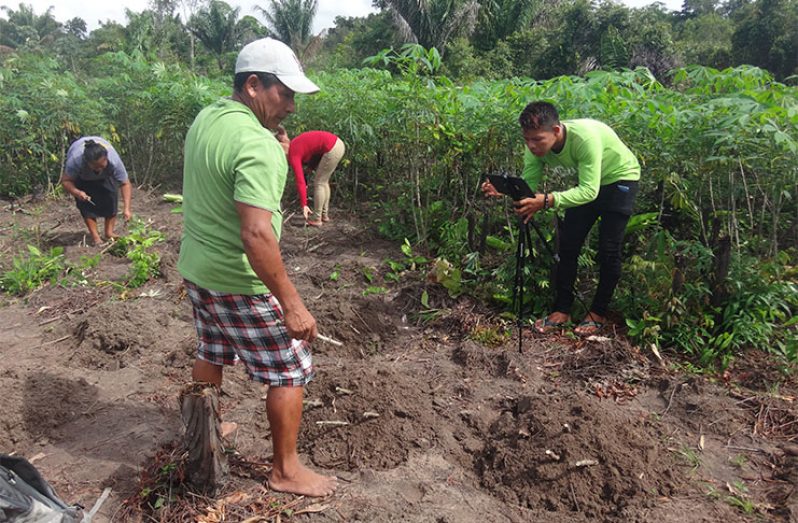TODAY the entire planet faces global environmental issues ranging from climate change, land degradation, changes to ecosystems due to pollution and loss of its unique biodiversity; and the list goes on. The impacts on human health and well-being are inevitable, whether living in developed or developing countries and whether in an urban or rural environment. The effects are indeed far-reaching!
Indigenous Peoples are at the heart of some of these threats and the international community has recognised their unique culture in relation to the environment and the need to protect their rights and preserve their cultures, languages, and way of life. On August 9, the world will celebrate the International Day for the Right of Indigenous Peoples.
Such recognition also comes through the United Nations Convention on Biological Diversity (UNCBD) which recognises that Indigenous Peoples have been safeguarding as much as 80 percent of the earth’s biodiversity, even though they are estimated to occupy less than a quarter of the earth’s land area and are a mere five percent of the global population.
The Convention and its associated Aichi Targets not only calls for nations to recognise what Indigenous Peoples have done but more importantly, the engagement and participation of local Indigenous Peoples as countries work towards meeting their obligations to the convention.

Local efforts in Guyana to recognise and better engage our Indigenous Peoples
Here in Guyana, several initiatives have been executed over the years to foster improved recognition and respect for Indigenous Peoples and the preservation of their traditional knowledge (TK). In line with the obligations under the said Aichi Targets, the Darwin Initiative project is being executed with major local partners including the North Rupununi District Development Board (NRDDB), South-Central Peoples’ Development Association (SCPDA), Kanuku Mountains Community Representative Group (KMCRG), Ministry of Indigenous Peoples Affairs (MoIPA) and the Department of Environment’s sector agencies; the Environmental Protection Agency (EPA) and the Protected Areas Commission (PAC).
International partners also provide technical support to this project are the Royal Hollaway University of London and the United Nations Environment Programme – World Conservation Monitoring Centre.
The project, which began in September 2017 and is expected to end in 2021, speaks directly to the recognition of the role Indigenous Peoples and their traditional knowledge plays in the management of Protected Areas. Working with communities associated with Protected Areas aims to create an evidence-based approach that can be replicated for improved recognition and respect for traditional knowledge and increased engagement of Indigenous peoples in decision-making. This involves the use of the participatory video approach and involves training community members in the use of simple techniques of capturing and editing video footage to create community-videos.
These community-videos serve to empower indigenous communities by capturing the opinions, concerns and recommendations of community members on a specific topic – which for this project, is Traditional Knowledge and Protected Areas Management. Their voices can then be heard when such community videos are shared with the relevant governmental stakeholders.
At the national level, the project has been engaging a wide cross-section of government ministries and sector agencies to assess the existing level of traditional knowledge recognition, and how Indigenous peoples are already being incorporated into decision-making processes.
Further, by recognising the opportunities for improving these areas, the project will be supporting the development of a National Action Plan in that regard. This plan will be geared towards raising awareness of the critical role of Indigenous peoples and the value of their traditional knowledge; strengthening local laws, governance and mechanisms that support respect for and incorporation of traditional knowledge; and empowering Indigenous communities to appropriately document and address matters related to the preservation and incorporation of TK for improved decision-making.
One step at a time: A call to preserve the world’s Indigenous Languages
The year 2019 has been identified as the International Year of Indigenous Languages, and this year’s theme draws attention to the critical loss of indigenous languages and the urgent need to preserve, revitalise and promote them at both national and international levels. An example of a current local language project being led by the Ministry of Indigenous Peoples’ Affairs, is the Bilingual Education Programme which aims to support the introduction of the Wapishan indigenous language at the nursery school education curriculum.
Let us continue to value our Indigenous Peoples through respect, improved engagement and cooperation.
You can share your ideas and questions by sending letters to: “Our Earth, Our Environment”, C/O ECEA Programme, Environmental Protection Agency, Ganges Street, Sophia, GEORGETOWN, or email us at eit.epaguyana@gmail.com or follow us on Facebook and Instagram.



.jpg)








